The Skinny on Fibre
June 2021
Fibre is a unique type of carb found in plants that cannot be easily digested and absorbed by the body – meaning it does not provide energy (calories). And because of its unique properties, higher fibre intakes have been linked to a number of positive health benefits, including:
Weight management and appetite control
Improved and protects digestive tract from inflammation and disease
Lowers cholesterol
Blood Sugar Control
Heart health
Removes toxins
Facilitates intestinal movement
Helps control hormone levels
How Much Fibre Do You Need Each Day?
The average recommended daily amount of 30 grams for women and 35 grams for men.
Higher amounts of fibre are suggested for those with certain health conditions like heart disease, diabetes, constipation, and colon cancer.
What Foods Are High in Fibre?
Fibre is the "roughage" portion of plants and is not naturally in meat, dairy, or seafood. In other words, your best source of fibre in the diet is plant-based foods, including fruits, vegetables, beans, legumes, nuts, seeds, and whole grains.
But not all plants are considered high in fibre. Additionally, the type and amount of fibre in each food can vary.
Based on the minimum daily requirement of 30 grams of fibre a day, any food that contains 3g of fibre (10% of the daily value) is considered a good source, and those with 5g or more are an excellent source.
Soluble vs. Insoluble Fibre
There are also two main types of fibre found in food: soluble and insoluble. Soluble fibre can dissolve in water. Thus it has the ability to form a gel-like substance in your digestive tract and may help remove some unwanted nutrients like cholesterol and help reduce your risk of heart disease. This effect might also help you lose weight by helping you feel full.
Insoluble fibre cannot dissolve in water and tends to be the type of fibre that helps keep things moving along - aka keeping your bowel movements regular by adding bulk to your stool.
Both types of fibre provide potential health advantages, and more often than not, high fibre foods contain soluble and insoluble fibre in varying amounts.
Fibre Supplements vs. Fibre Foods
It is also common for people to turn to supplements to overcome low fibre intakes. You can purchase fibre in a supplement form as a powder or find it added to various types of packaged food.
The daily fibre guidelines do not include fibre supplements for a few different reasons:
Natural sources of fibre tend to come from healthy foods
Not all added fibres are associated with health benefits
Fibre supplements can cause digestive issues in some people.
Naturally, fibrous foods also tend to be extremely nutrient-dense. Fruits and vegetables are filled with key vitamins and minerals and low in calories. Beans, lentils, and legumes contain a good amount of plant-based protein. And nuts and seeds are also a source of heart-healthy fat.
Plus, increasing your intake of these foods can improve your nutrition, leading to many notable health benefits.
Added fibre, on the other hand, can be put into just about anything - even a candy bar! Some theorize that the advantages of fibre stem from the nutritious foods they are packaged in and not the fibre itself. But when researchers looked at fibre alone in supplement form, they discovered that not all types of added fibre provide the same health perks.
In other words, naturally occurring fibre may have some unique properties that supplements cannot compete with.
Additionally, added fibre could be associated with gastroenteritis distress, causing bloating, gas, and diarrhea in some people.
20 Foods High in Soluble Fibre
The top fibre foods that are rich in soluble fibre include the following:
Fresh Fruit and Dried Fruit List
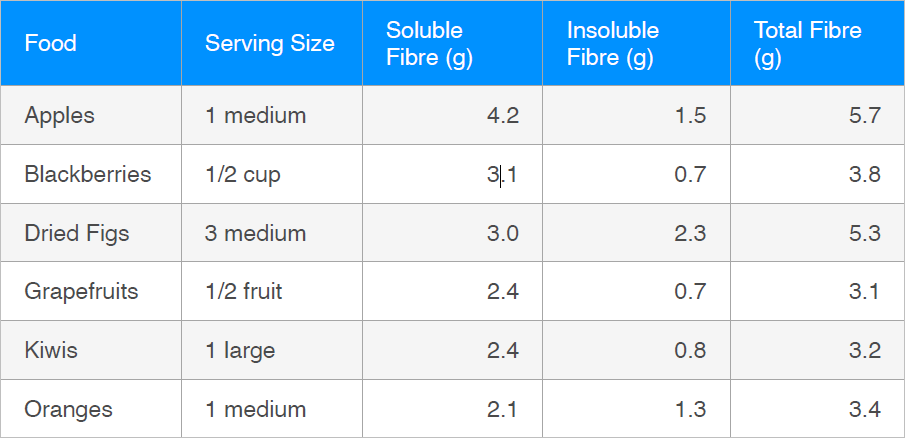
*Reference: USDA National Nutrient Database for Standard Reference, Legacy Release
Nuts, Seeds, and Beans List
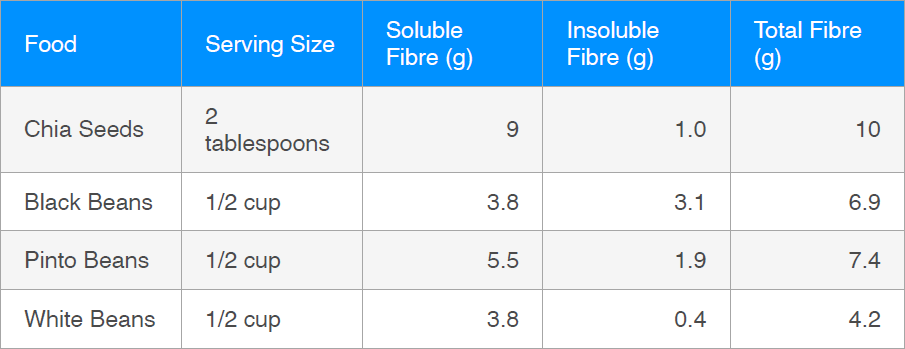
*Reference: USDA National Nutrient Database for Standard Reference, Legacy Release
Vegetable List

*Reference: USDA National Nutrient Database for Standard Reference, Legacy Release
Whole Grain List
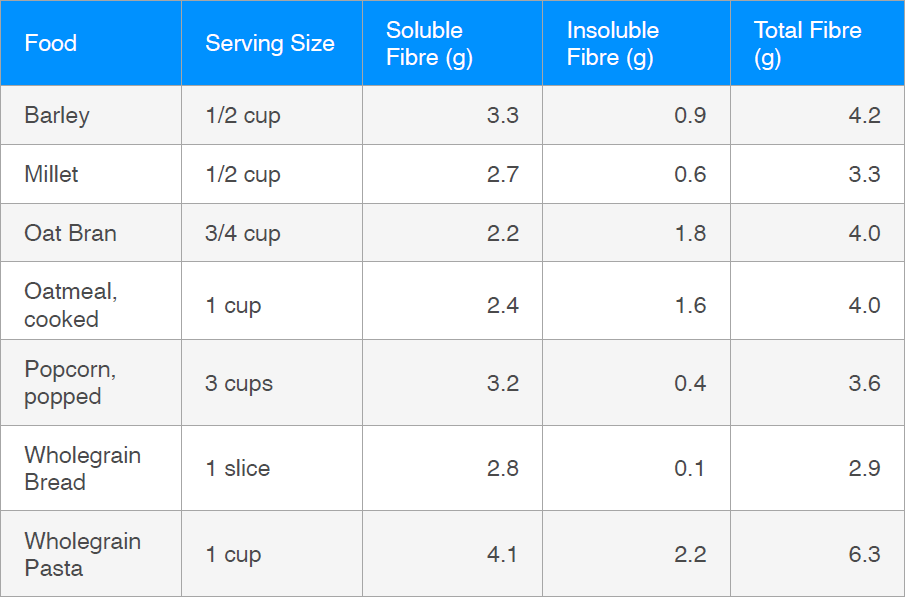
*Reference: USDA National Nutrient Database for Standard Reference, Legacy Release
12 Foods High in Insoluble Fibre
Foods highest in insoluble fibre include:
Fresh Fruit and Dried Fruit List
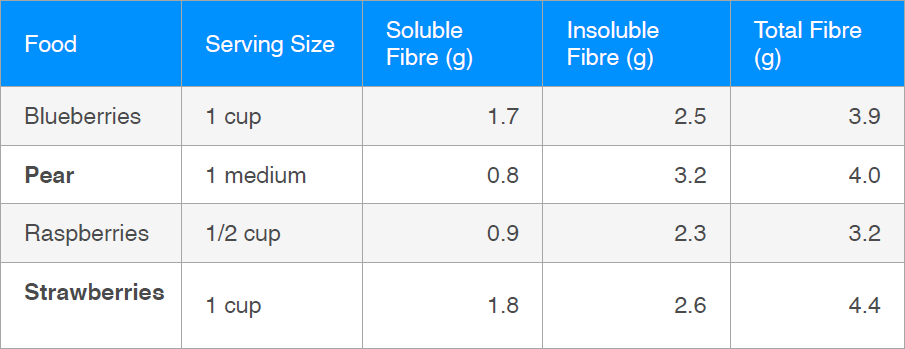
*Reference: USDA National Nutrient Database for Standard Reference, Legacy Release
Nuts, Seeds, and Beans List
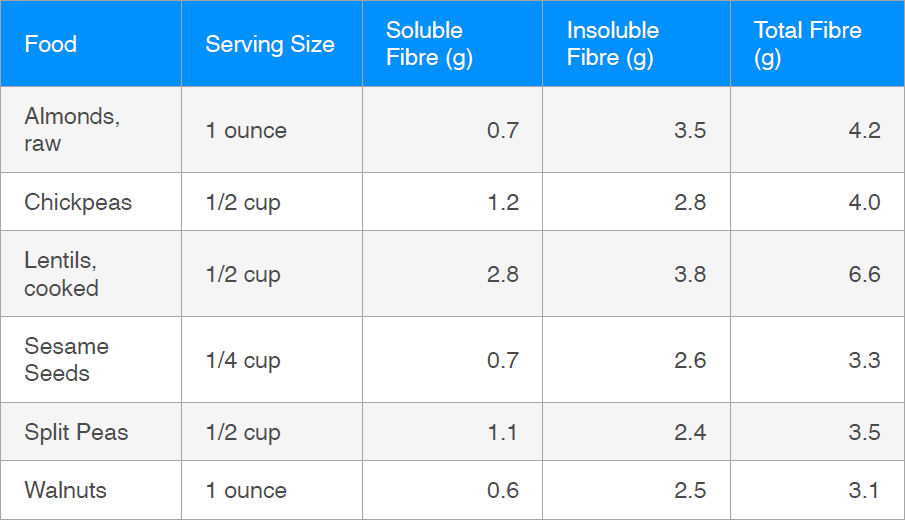
*Reference: USDA National Nutrient Database for Standard Reference, Legacy Release
Vegetable List

*Reference: USDA National Nutrient Database for Standard Reference, Legacy Release
Whole Grain List

*Reference: USDA National Nutrient Database for Standard Reference, Legacy Release
18 Other High Fibre Foods
Foods packed with roughly equal amounts of the two types of fibre are:
Fresh Fruit and Dried Fruit List

*Reference: USDA National Nutrient Database for Standard Reference, Legacy Release
Nuts, Seeds, and Beans List

*Reference: USDA National Nutrient Database for Standard Reference, Legacy Release
Vegetable List

*Reference: USDA National Nutrient Database for Standard Reference, Legacy Release
Whole Grain List

*Reference: USDA National Nutrient Database for Standard Reference, Legacy Release
Tips to Add Fibre to Your Diet
Getting enough fibre can feel challenging at first, but it's actually easier than you think. Just by increasing the amount of plant-based foods you consume, you can naturally boost your intake as well as add many essential nutrients to your plate.
To help you learn how to balance your nutrition and increase the fibre content of your meals, try the following:
Make half your dinner plate veggies
Start the day with a high fibre, low sugar cereal.
Choose more whole-grain bread, rice, and cereals and less refined carbohydrates when possible
Snack on fibre-filled nuts
Grab fresh fruit for a simple and delicious dessert option
Eat plant-based proteins like edamame, beans, and lentils
Top off salads and stir-fry with seeds and nuts
Add berries and chia seeds to your yogurt parfait
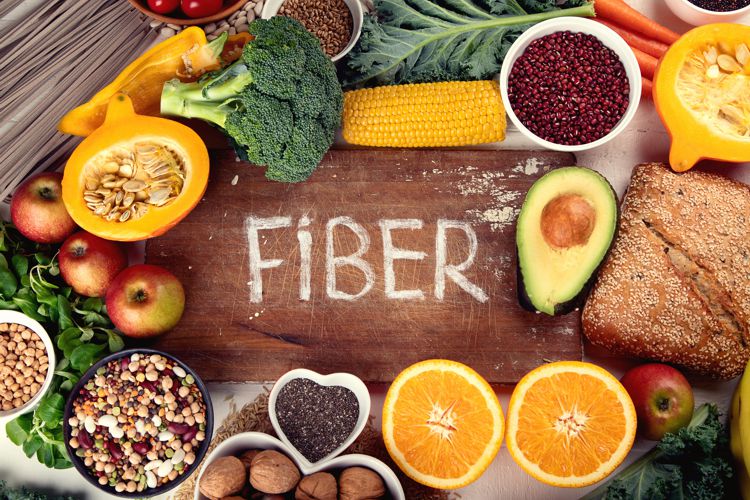
Articles:
- Castor Oil Medicinals
- Sauerkraut – the BEST probiotic
- Raw Honey, Lemon and Ginger Stacked & Shaken
- Are you using all the tools in your 'Health Box'?
- Chinese Medicine for Health and Wellness
- Kidneys are the Body's Furnace
- 10 Superfoods to Boost Your Immune System
- Clear Your Lungs with Chinese Medicine
- Welcome to Summer – the time of Joy and Yang Rising
- The Skinny on Fibre




